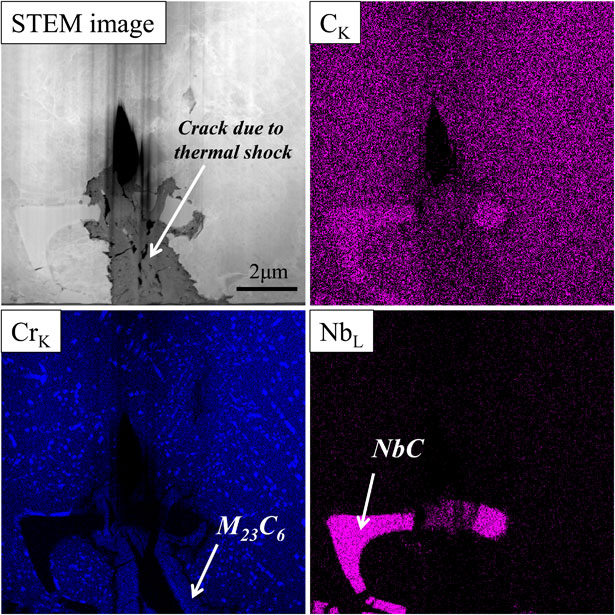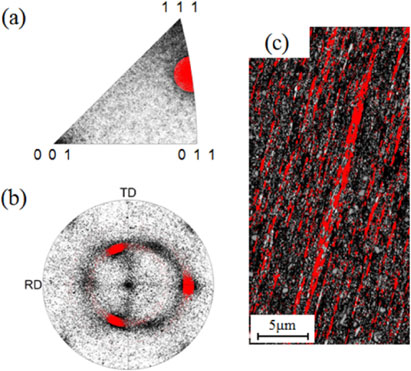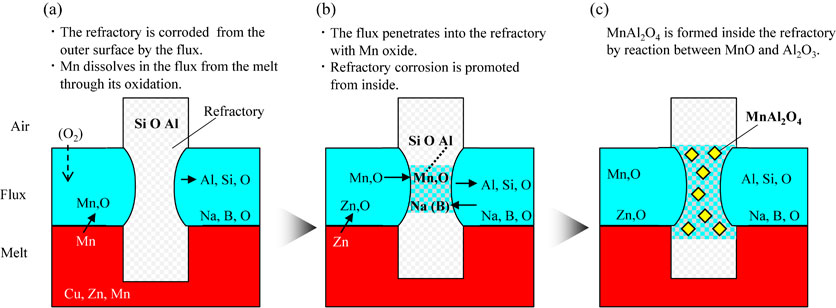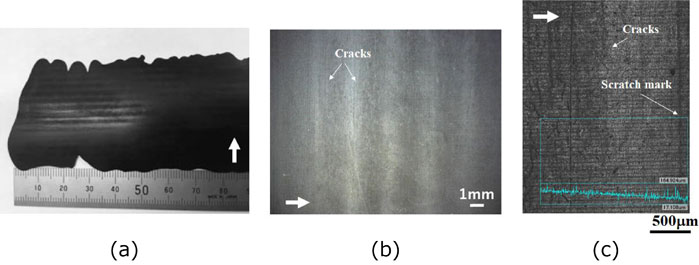61 巻, 9 号
選択された号の論文の26件中1~26を表示しています
- |<
- <
- 1
- >
- >|
Regular Article
Materials Physics
-
原稿種別: Regular Article
2020 年 61 巻 9 号 p. 1707-1710
発行日: 2020/09/01
公開日: 2020/08/25
[早期公開] 公開日: 2020/07/10PDF形式でダウンロード (2857K) HTML形式で全画面表示 -
原稿種別: Regular Article
2020 年 61 巻 9 号 p. 1711-1716
発行日: 2020/09/01
公開日: 2020/08/25
[早期公開] 公開日: 2020/07/28PDF形式でダウンロード (7813K) HTML形式で全画面表示 -
原稿種別: Regular Article
2020 年 61 巻 9 号 p. 1717-1726
発行日: 2020/09/01
公開日: 2020/08/25
[早期公開] 公開日: 2020/07/17PDF形式でダウンロード (6293K) HTML形式で全画面表示 -
原稿種別: Regular Article
2020 年 61 巻 9 号 p. 1727-1730
発行日: 2020/09/01
公開日: 2020/08/25
[早期公開] 公開日: 2020/07/17PDF形式でダウンロード (1672K) HTML形式で全画面表示
Microstructure of Materials
-
原稿種別: Regular Article
2020 年 61 巻 9 号 p. 1731-1739
発行日: 2020/09/01
公開日: 2020/08/25
[早期公開] 公開日: 2020/07/17PDF形式でダウンロード (4995K) HTML形式で全画面表示 -
原稿種別: Regular Article
2020 年 61 巻 9 号 p. 1740-1749
発行日: 2020/09/01
公開日: 2020/08/25
[早期公開] 公開日: 2020/07/17PDF形式でダウンロード (2663K) HTML形式で全画面表示 -
原稿種別: Regular Article
2020 年 61 巻 9 号 p. 1750-1759
発行日: 2020/09/01
公開日: 2020/08/25
PDF形式でダウンロード (10311K) HTML形式で全画面表示
Mechanics of Materials
-
原稿種別: Regular Article
2020 年 61 巻 9 号 p. 1760-1766
発行日: 2020/09/01
公開日: 2020/08/25
PDF形式でダウンロード (4891K) HTML形式で全画面表示 -
原稿種別: Regular Article
2020 年 61 巻 9 号 p. 1767-1774
発行日: 2020/09/01
公開日: 2020/08/25
[早期公開] 公開日: 2020/07/28PDF形式でダウンロード (3821K) HTML形式で全画面表示 -
原稿種別: Regular Article
2020 年 61 巻 9 号 p. 1775-1781
発行日: 2020/09/01
公開日: 2020/08/25
[早期公開] 公開日: 2020/08/03PDF形式でダウンロード (3636K) HTML形式で全画面表示 -
原稿種別: Regular Article
2020 年 61 巻 9 号 p. 1782-1789
発行日: 2020/09/01
公開日: 2020/08/25
PDF形式でダウンロード (5587K) HTML形式で全画面表示
Materials Chemistry
-
原稿種別: Regular Article
2020 年 61 巻 9 号 p. 1790-1797
発行日: 2020/09/01
公開日: 2020/08/25
PDF形式でダウンロード (3945K) HTML形式で全画面表示 -
原稿種別: Regular Article
2020 年 61 巻 9 号 p. 1798-1804
発行日: 2020/09/01
公開日: 2020/08/25
PDF形式でダウンロード (3519K) HTML形式で全画面表示 -
原稿種別: Regular Article
2020 年 61 巻 9 号 p. 1805-1812
発行日: 2020/09/01
公開日: 2020/08/25
PDF形式でダウンロード (2308K) HTML形式で全画面表示 -
原稿種別: Regular Article
2020 年 61 巻 9 号 p. 1813-1819
発行日: 2020/09/01
公開日: 2020/08/25
[早期公開] 公開日: 2020/07/17PDF形式でダウンロード (3386K) HTML形式で全画面表示 -
原稿種別: Regular Article
2020 年 61 巻 9 号 p. 1820-1828
発行日: 2020/09/01
公開日: 2020/08/25
[早期公開] 公開日: 2020/07/17PDF形式でダウンロード (5606K) HTML形式で全画面表示 -
原稿種別: Regular Article
2020 年 61 巻 9 号 p. 1829-1832
発行日: 2020/09/01
公開日: 2020/08/25
[早期公開] 公開日: 2020/07/28PDF形式でダウンロード (1805K) HTML形式で全画面表示 -
原稿種別: Regular Article
2020 年 61 巻 9 号 p. 1833-1841
発行日: 2020/09/01
公開日: 2020/08/25
PDF形式でダウンロード (12206K) HTML形式で全画面表示 -
原稿種別: Regular Article
2020 年 61 巻 9 号 p. 1842-1847
発行日: 2020/09/01
公開日: 2020/08/25
[早期公開] 公開日: 2020/07/28PDF形式でダウンロード (4137K) HTML形式で全画面表示 -
原稿種別: Regular Article
2020 年 61 巻 9 号 p. 1848-1852
発行日: 2020/09/01
公開日: 2020/08/25
PDF形式でダウンロード (1892K) HTML形式で全画面表示
Materials Processing
-
原稿種別: Regular Article
2020 年 61 巻 9 号 p. 1853-1861
発行日: 2020/09/01
公開日: 2020/08/25
[早期公開] 公開日: 2020/08/03PDF形式でダウンロード (8112K) HTML形式で全画面表示 -
原稿種別: Regular Article
2020 年 61 巻 9 号 p. 1862-1867
発行日: 2020/09/01
公開日: 2020/08/25
[早期公開] 公開日: 2020/07/17PDF形式でダウンロード (6185K) HTML形式で全画面表示
Engineering Materials and Their Applications
-
原稿種別: Regular Article
2020 年 61 巻 9 号 p. 1868-1873
発行日: 2020/09/01
公開日: 2020/08/25
PDF形式でダウンロード (2497K) HTML形式で全画面表示 -
 原稿種別: Regular Article
原稿種別: Regular Article
2020 年 61 巻 9 号 p. 1874-1880
発行日: 2020/09/01
公開日: 2020/08/25
[早期公開] 公開日: 2020/07/28
Environment
-
原稿種別: Regular Article
2020 年 61 巻 9 号 p. 1881-1888
発行日: 2020/09/01
公開日: 2020/08/25
[早期公開] 公開日: 2020/07/17PDF形式でダウンロード (10387K) HTML形式で全画面表示
Technical Article
-
原稿種別: Technical Article
2020 年 61 巻 9 号 p. 1889-1893
発行日: 2020/09/01
公開日: 2020/08/25
PDF形式でダウンロード (2773K) HTML形式で全画面表示
- |<
- <
- 1
- >
- >|





















